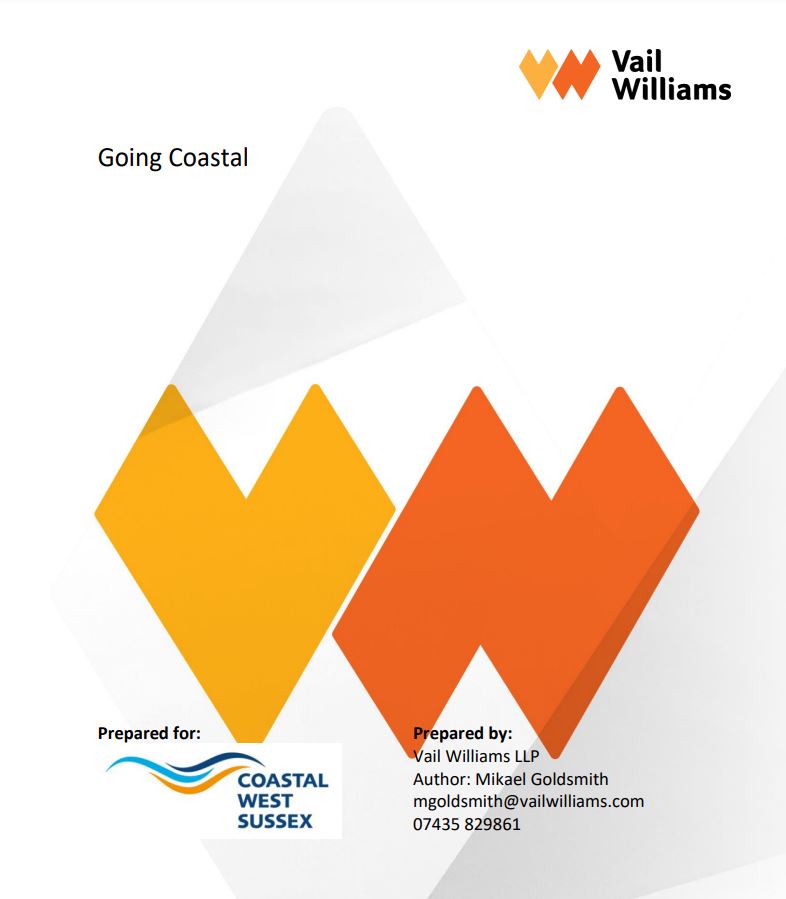On 7th July, the partnership held its third in a series of Ideas Exchange events in collaboration with Always Possible. This time the event looked at ‘Places & Spaces’, hosted by Ricardo in Shoreham.
Around 30 people attended the event, representing local authorities and businesses from across the region to discuss commercial space challenges and possible solutions.
Mikael Goldsmith from Vail Williams presented a new report, commissioned by the partnership, which can be downloaded from here.
The report looked at the demand, availability and trends impacting industrial and office space in West Sussex.
Setting the scene, Mikael commented that the Environment Act 2021 is at the forefront of the planning agenda with far reaching implications. Whilst well intentioned and important, the practical realities of the act will means higher costs and time for planning applications and, with a shortage of planning consultants, this will only put the system under more pressure.
Permitted development was designed to release housing stock by allowing office space to be converted to residential units without formal planning approval. However, there is still a real need for employment space across the region so local authorities will be looking carefully at Article 4 to put the breaks on some of these permitted developments.
The office market – we need more of it and better quality
The office market has struggled since the pandemic and Mikael quoted a few trends he’d noticed in the market. Some occupiers are taking up to 50% less sq ft in exchange for better quality space and smaller occupiers (taking less than 2,000 sq ft) are prioritising flexibility above all else, demanding flexible terms as opposed to the traditional three or five-year leases. With little in the way of new development across the region and commercial space being lost to permitted development, there’s a supply challenge.
In terms of office space, Chichester, Worthing and Adur all have around a year’s supply and the expected rent returns in these areas are too low for developers to consider speculative development, therefore many of the new office space buildings are created for pre-let agreements only.
In Chichester, for example, the Southern Gate Office Village is now at 80-90% occupancy but it took 3-4 years to get to that level. Around half of the office space in the city is obsolete by modern occupier standards. Despite having a strong economy, there’s very little proposed new development coming through, traffic congestion is causing problems and the city is up against stiff competition from the likes of Lakeside in Portsmouth which offers a higher quality product and isn’t significantly more expensive. Much of the city centre is also listed or in a conservation area.
In Arun, the office market isn’t as well established as other regions and the employment sites which are coming through are therefore more likely to be industrial than office led. Adur is the region’s smallest office market with just 300,000 sq ft and, like Arun, most new sites are industrial.
Worthing has very little new build accommodation – Yeoman Gate was built around 15 years ago and the new HMRC building at Teville Gate was built on a pre-let basis. Mikael commented that this development probably wouldn’t have worked on a speculative basis. A lot of office space is being lost to permitted development and although a large proportion of this space was probably obsolete, it’s still a significant loss. Worthing has constrained land supply like many other areas in the region, sandwiched between the sea and the downs. It also suffers from aging accommodation and the office market is largely internal – it’s not attracting much inward migration.
So, what support does the region’s office market need? We need to protect existing accommodation; local authorities need to consider Article 4 interventions in central areas and we need improved road and transport infrastructure to encourage inward investment.
Industrial space – it’s all about Arun
The industrial market (which covers both industrial and warehouse space) is experiencing high demand following the well-documented rise in online shopping during the pandemic leading to demand for space in an already tight market – this has led to rental price increases of up to 50% in some locations.
In Chichester, the industrial market has a severe shortage of space and with most requirements of more than 10,000 sq ft being logistics led, the city’s transport issues could put off potential newcomers as well as local businesses looking to grow.
Arun has around 18-months supply. The newcomer, Saltbox, has already attracted inward investment with Warburtons taking space. Given the expected road improvements in the plan, Arun is poised to flourish as a business location.
Worthing has around four years supply of industrial space but most of that is also from a single building. Accommodation quality in the city is declining and only 30,000 sq ft of space has been consented, although other sites have been earmarked in the local plan. Worthing has the greatest land supply issue which doesn’t allow much scope for development, this has also led to high headline rents. The road network in Worthing is also a challenge and is constraining inward investment.
Adur has a tight supply of industrial space, with only around three months available, although there’s more than 250,000 sq ft set to be delivered over the next 12 months. Adur also has land supply and transport issues as well as a lot of land in a flood zone.
So what does the industrial market need? More allocation of land, grants to improve environmental credentials of units and… you guessed it, improvements to road and transport structure.
Business challenges
Businesses across the region are struggling with sourcing and retaining talent – the job market is incredibly tight and the draw from London is real. Having better quality commercial space is one factor that could improve this.
Another challenge that businesses are facing is the changing EPC legislation – something that landlords are having to keep a close eye on and could use some assistance in terms of grants, information and other support.
The business rates evaluation expected next year will also put occupiers and businesses under more pressure with significant rises coming.
The discussion
Attendees were then challenged to create solutions in round-table discussions. Some of these included:
- A focus on providing more co-working space to meet the demand for flexibility from occupiers
- ‘If we build it they will come’ – the need to build quality units to attract inward investment
- Unlock space for existing businesses to grow into including upgrading existing buildings as well as offering affordable coworking space
- Local authorities across the region to work together to build an integrated transport strategy
- Education of communities to change the common perception that developments are a bad thing – we need a cultural and attitudinal change from local residents
- Creating a strategic dialogue, formalising the high-level conversations across the region.
- Meanwhile use – creating plans to turn public sector space into commercial units, e.g. redundant retail space
- Incentivising landlords to upgrade properties to improve EPC ratings and create better quality space to attract inward investment
- Create and provide a simple, clear toolkit for occupiers to reach 2030 net zero targets. Create a sense of urgency that occupiers need to address this quickly.
This conversation within the CWSP will be ongoing, so get in touch with Caroline if you have anything to add to the discussion and watch this space for more news.
In other news, did you know The Track in Bognor Regis is offering free childcare and coworking every Friday throughout August 2022? Click here for more information: thetrackbr.co.uk.

